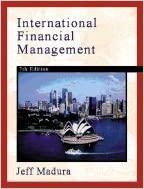Question
When investing, people face a common decision: is it best to put money into a regular non-registered investment account, or to invest through an RRSP
When investing, people face a common decision: is it best to put money into a regular non-registered investment account, or to invest through an RRSP or TFSA registered account? The answer to this is not always simple. Depending on the scenario, any one of them can be best. Recall the following:
Non-registered accounts Have no deduction when putting money in
Pay normal income tax on money earned within a year (ignore whether it is interest, growth, or capital gains for this analysis)
Pay no tax when withdrawing from the account (though normally you might pay capital gains when selling; which we will ignore for this analysis)
TFSA accounts Have no deduction when putting money in (but the sum of all contributions is capped at $5000 per year, indexed to inflation from 2009, since age 18)
Pay no tax on dividends, capital gains, or interest earned
Receive neither the dividend nor capital gains tax credit
Pay no tax on withdrawal from the account
RRSP accounts
Allow a deduction when putting money in (up to a limit of 18% of your income or the money purchase limit of $22,000 per year, indexed from 2009) thereby allowing you to contribute more by avoiding tax at the time of contribution
Pay no tax on any dividends, capital gains, or interest earned, as long as it remains within the account
Pay full income tax on all money withdrawn from the account (regardless of how it was earned) Consider the scenarios on the back of this page, and calculate the money that will be available after the investment period is up.
You will need to use a financial calculator. Assume:
Each year you plan to invest $1000 x E (where E is the sixth digit in your student number) oE= 6 (1000*6)
If you get a deduction on investment in a 35% bracket, it becomes $1538.46 x E o E=6 (1538.46*6)
E.g., if your student number is 1234567 then, every year, you have $1000 x 6 = $6000 to invest after tax, or $1538.46 x 6 = $9230.76 to invest if deducted
You retire in year 30 you are in a 35% tax bracket before retirement y
ou are in a 25% tax bracket after retirement
all investments have a 5% before-tax rate of return o the return is 3.25% if a 35% tax rate is applied o the return is 3.75% if a 25% tax rate is applied
no TFSA or RRSP limits are reached
Answer the following questions. Within your answer, show the work listed after the questions.
1. You invest for 5 years into a TFSA and withdraw before retirement.
2. You invest for 5 years into an RRSP and withdraw before retirement.
3. You invest for 30 years into a non-registered account and withdraw after retirement.
4. You invest for 30 years into a TFSA account and withdraw after retirement.
5. You invest for 30 years into an RRSP and withdraw after retirement.
To show your work for each question, just list the following numbers:
a. How much is being invested each year?
b. What is the yearly rate of return after tax?
c. How much money is there at the end of the investment period, before tax?
d. When the money is withdrawn, is all of it, only the growth, or none of it taxed?
e. What is your tax rate?
f. How much after-tax money is there at the end?
Tips for each part:
a. What type of account is it?
b. If there is yearly tax on investment returns, reduce the rate of return by the relevant tax rate.
c. Use a financial calculator to find the future value given the info you now have.
d. Whether money is taxed when withdrawn depends on the type of the account.
All of it means the original money invested and all investment returns are taxed.
Only the growth means the original money is not taxed, but investment returns are.
None of it means neither the original money nor investment returns are taxed.
e. Are you working or retired?
f. Apply the tax rate e on the relevant part of c (considering d) to determine how much is left after tax.
For example, if the question was about investing for five years into a non-registered account, your answer should look like this: a. 5000 b. 3.25% c. 27678.68 d. None of it e. 0% f. 27678.68 (For c: N = 5, I/Y = 3.25, PV = 0, PMT = -5000, P/Y = 1, C/Y = 1, END of period, then compute FV.)
To help you my student # is 0268540 so the 6th number is 4
Step by Step Solution
There are 3 Steps involved in it
Step: 1

Get Instant Access to Expert-Tailored Solutions
See step-by-step solutions with expert insights and AI powered tools for academic success
Step: 2

Step: 3

Ace Your Homework with AI
Get the answers you need in no time with our AI-driven, step-by-step assistance
Get Started


